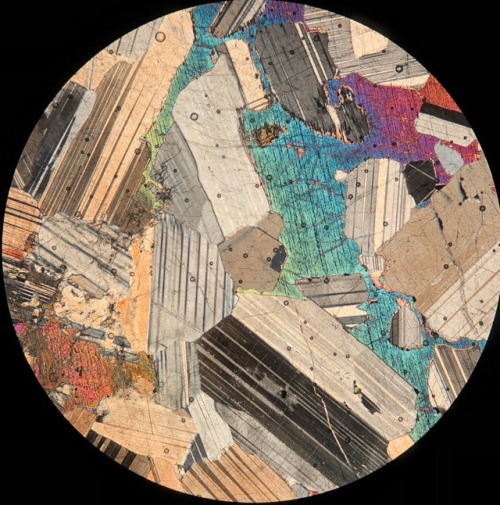#pyroxene





All of these samples were collected at Hogen Camp Mine, Harriman State Park, NY. The first image is a reflected light image of the ore vein. The ore vein formed as a result of dextral shear which ultimately created large fractures. Shortly after this, hydrothemal alteraltion occured of the metavolcanic gneiss in the region (image 2 and 3). The metavolcanic gneiss is rich in iron. Due to this, the highly acidic metamorphic fluids began to precipitate in the fractures. The process yeilded magnetite, clinopyroxene, and less common biotite within the fractures occuring at Hogen Camp Mine. The clinopyroxene and biotite are highly rich in iron.
Image 3 and 4 is the local pink pegmatites that occured in the region around 923 Ma. The pegmatitic dikes formed post-Ottawan orogeny. Composition includes: alkali feldspar with minor constituents of clinopyroxene and quartz.
Working on polishing my samples for reflective light microscopy. This sample is a pyroxenite from Hogen Camp Mine in the Hudson Highlands region of New York. The area was once a lead producer of iron ore and magnetite for the east coast.
Post link
The plagioclase in this thin section has polysynthetic twinning. The orthopyroxene also has twinning present in most grains. The clinopyroxene is filling voids in the rock and have an anhedral structure, filling interstitial space, compared to to the plagioclase and orthopyroxene which range from subhedral to euhedral. The rock is a gabbronorite due to the presence of both orthopyroxene and clinopyroxene.
Post link
Mineral under pressure
This is a photograph of mineral called pyroxene and was taken with a petrographic microscope, and it captures megascale forces of the tectonic processes on the microscale level. This mineral is about 1.5 mm and was found in a rock called greenschist.
This rock is heavily deformed, sheared, due to the force of the tectonic plates pushing against each other. Imagine one plate being a bread and other a knife, and the rock you are looking at is like a butter being smeared on the toast.
The pyroxene is harder than the rest of the minerals in this rock, and so, as the pressure is applied, the other minerals are deformed and squashed against the pyroxene while it remains largely undamaged.
Example from the Nubra Valley, Ladakh, Himalaya
Post link



